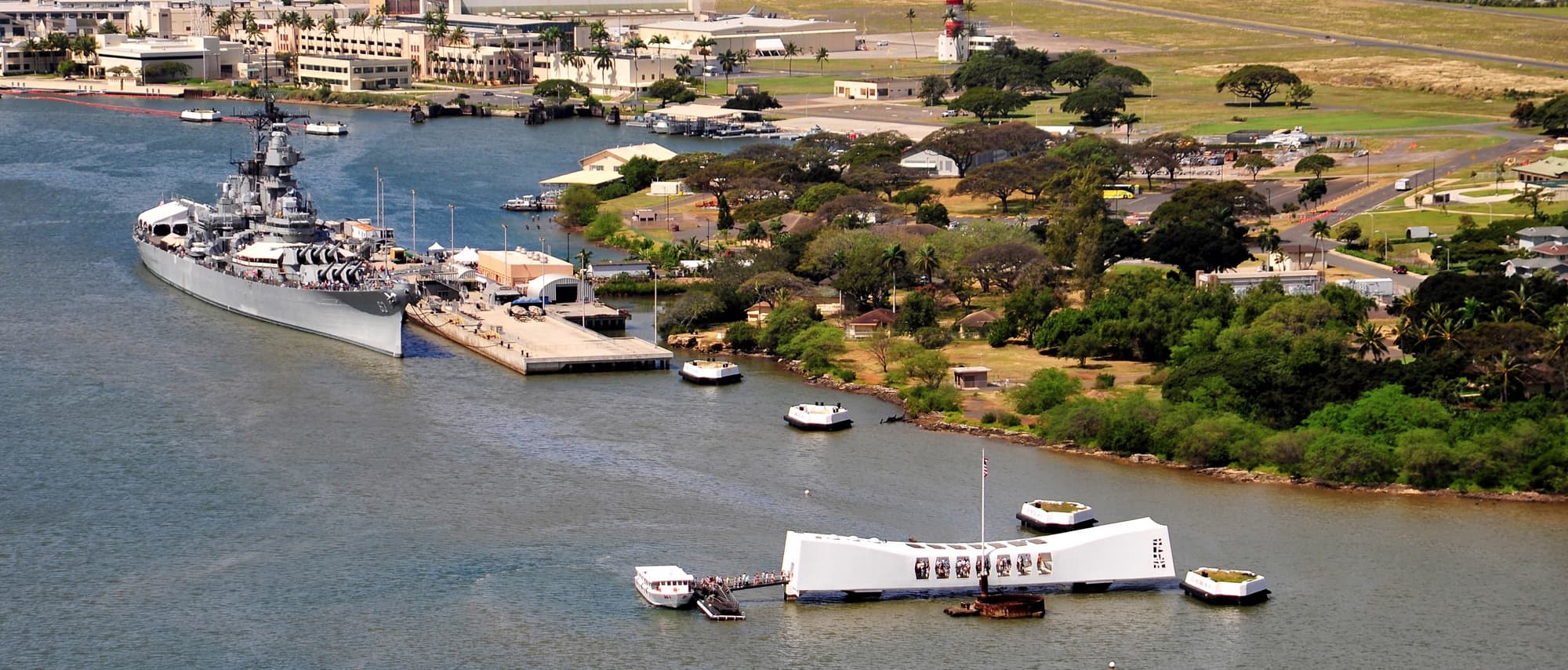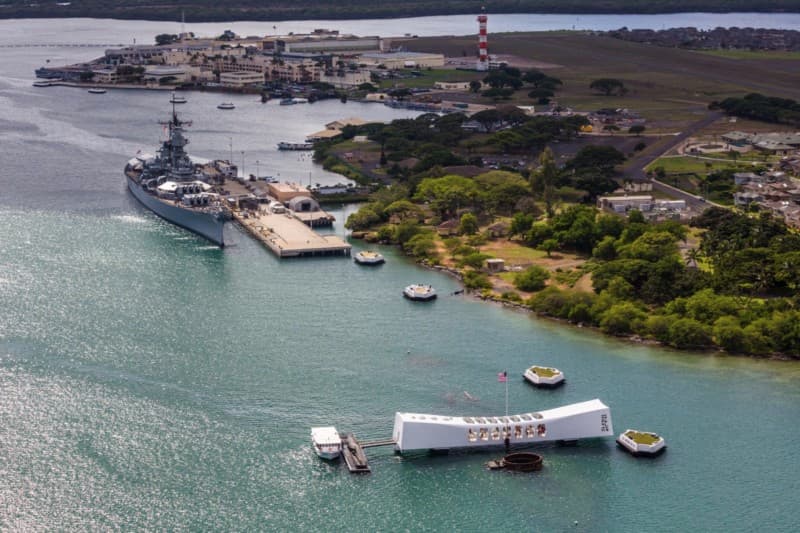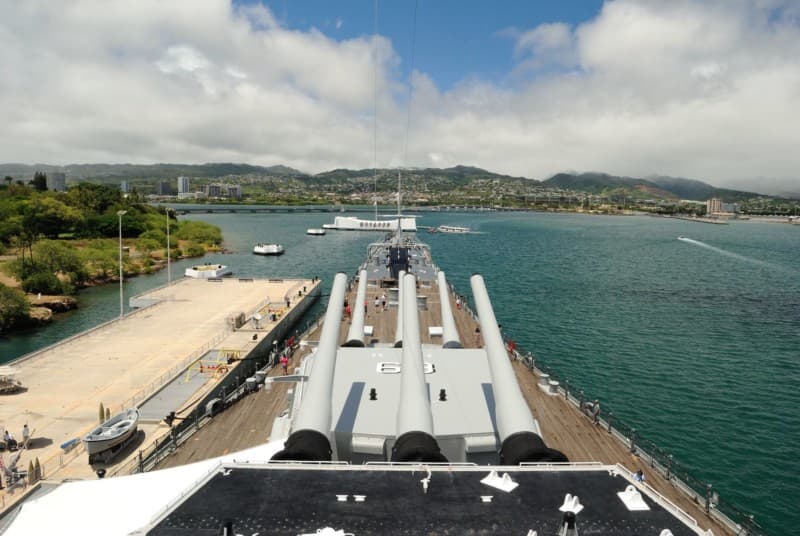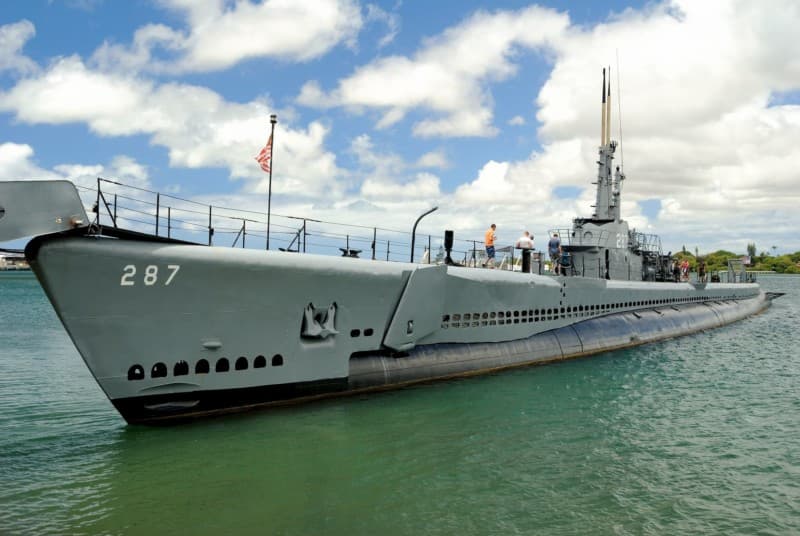With over 1.8 million visitors per year Pearl Harbor is one of the most visited place in all the Hawaiian Islands, and for good reason. People go to pay their respects to fallen heroes, and to learn more about what happened that fateful morning of December 7th, 1941. Here’s everything you need to know about a visit.
Table of contents
- Visiting Pearl Harbor
- The U.S.S. Arizona Memorial (free, but reservation required)
- The U.S.S. Missouri (paid)
- The U.S.S Bowfin Submarine (paid)
- The Pearl Harbor Aviation Museum (paid)
- The U.S.S Oklahoma Memorial (free)
- Tickets and Tours
- Suggested Pearl Harbor itinerary
- History
Table of Contents
- Visiting Pearl Harbor
- The U.S.S. Arizona Memorial (free, but reservation required)
- The U.S.S. Missouri (paid)
- The U.S.S Bowfin Submarine (paid)
- The Pearl Harbor Aviation Museum (paid)
- The U.S.S Oklahoma Memorial (free)
- Tickets and Tours
- Suggested Pearl Harbor itinerary
- History
Everything to Know About Visiting Pearl Harbor
Though typically referred to as a single entity, Pearl Harbor is not just one activity or one site. It’s a mix of free and pay-for activities that include museums, ship tours, and historical sites that, together, provide an overview of World War II and the impact it had on both the United States and Hawai‘i.
The starting point of the experience is the Visitor Center at Pearl Harbor. Here, there are several free attractions, shops, information booths, and ticket counters.
Bag Policy: Pearl Harbor does not allow bags into its Visitor Center. There is a bag storage facility on-site where you can leave your belongings for $5 a bag. This is a very strict policy, and the lines for the bag claim can be long, so consider bringing only what you absolutely need (wallet, camera, water bottle) and leave non-essential items at home (exceptions are made for families with strollers and/or people with medical needs).
Etiquette: Please keep in mind that many people visit Pearl Harbor to pay their respects to fallen family members and honor deceased military members. Please show others courtesy and respect during your visit. Remember, Pearl Harbor is not just another attraction to be visited; it’s a memorial where thousands of people lost their lives. Dress appropriately (no bathing suits).
After checking out the visitor center there are 5 major attractions you can visit:
- The U.S.S. Arizona Memorial (free, but reservation required)
- The U.S.S. Missouri (paid)
- The U.S.S Bowfin Submarine (paid)
- The Pearl Harbor Aviation Museum (paid)
- The U.S.S Oklahoma Memorial (free)
WWII Valor in the Pacific (USS Arizona Memorial) + Film
Overview: The main attraction at Pearl Harbor is the Arizona Memorial. It honors the 1,177 people who lost their lives when the ship was bombed and sank. The experience is two fold: First, you’ll watch a 25-minute movie that explains the buildup of U.S. involvement in World War II, and what led to increasing tensions with Japan. After the movie, you will board a boat and ride out to the Arizona Memorial, a stationary platform built over the sunken remains of the U.S.S. Arizona, where you will spend 15-20 minutes.
Tickets: Tickets for the movie and boat ride to the Arizona Memorial are free, but reservations are required. Reservations can be made online. Tour times are offered every 15 minutes from 7:30 a.m. to 3:00 p.m. If you reserve your movie and tour time online, you must pick up the tickets at least one hour before at the National Park Services’ ticket counter at the Visitor Center.
When to book your tickets for the Arizona Memorial
Tickets for the Arizona Memorial are released in two booking windows on the official website. One 8 weeks out and the other 24 hours out, both at 3PM Hawaii time.For example, tickets for Tuesday, June 28 will be available on Tuesday, May 3 and on Monday, June 27. Reserving tickets using the 8 weeks window is relatively easy, but the 24 hours window requires that you get them right at 3, or they will be gone.




